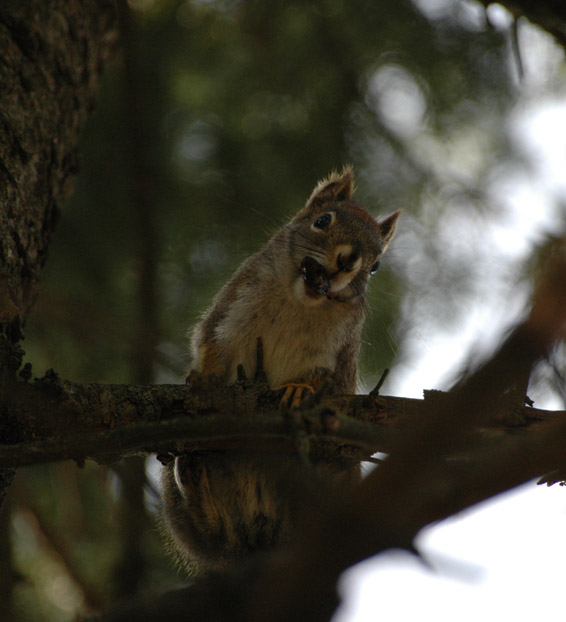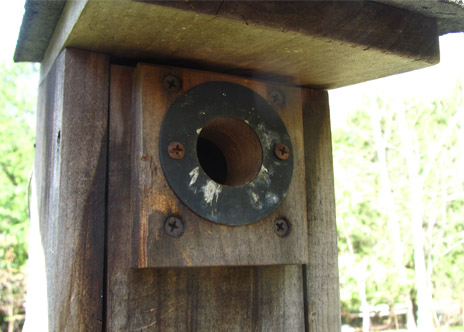 |  |
    
|

Black and Grey Squirrels |
Squirrels often chew out entrance holes of birdhouses trying to get inside. Birdhouses can make a great shelter for them to raise their own family if the interior is large enough. They can make entrance holes larger to gain access to a birdhouse because it can provide shelter from the elements. Squirrels target birdhouses ~900cm3 or greater because they provide enough room for squirrels to fit comfortably. Birdhouses for any birds other than chickadees, nuthatches, titmice and wrens must be over ~900cm3 and therefore a predator guard around the entrance hole is a good solution.
Predator guards, (seen in section below) keeps squirrels from enlarging the birdhouse entrance hole. They can be made from metal washers or even hardwoods such as oak. Some predator guards are plastic pipes that extend the entrance hole out from the birdhouse 2-3". While these solutions are not as aesthetically pleasing, they can provide a solution to an often daunting problem. Birdhouses with an inner volume under ~900cm3 are overlooked by squirrels because they are too small. This is why there is a lack of a predator guard on the hexagonal birdhouse. |
|
Mice and Rodents |
Sometimes birdhouses become nests for other creatures such as mice and other rodents. If this happens there could be a number of factors that are making the birdhouse unfavourable for birds and attractive to mice.
The birdhouse may smell. Clean the birdhouse interior with 1 part bleach and 9 parts water. Allow to air dry before re-mounting. The birdhouse may have too large of an interior and too small of an entrance hole. Small songbirds don't want to fill the interior cavity with copious amounts of nesting material, and larger birds are unable to get in because the entrance hole is too small. Making the nesting area smaller or entrance hole larger is a viable solution. To avoid rodents altogether, mount the birdhouse on a metal post which mice are unable to climb. |
 |  |
Sitemap | In Season | Products | Information | Store | Contact Us

